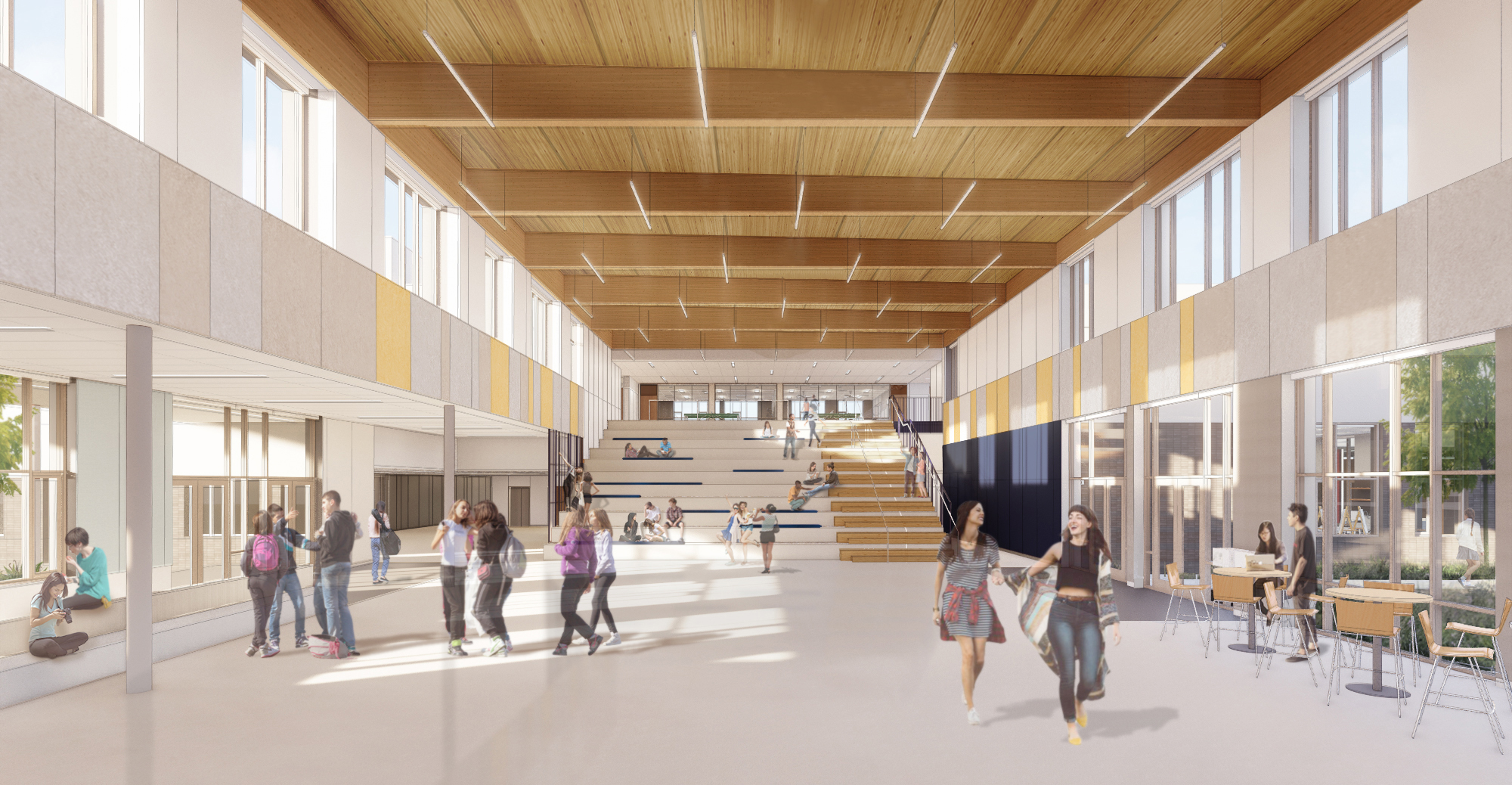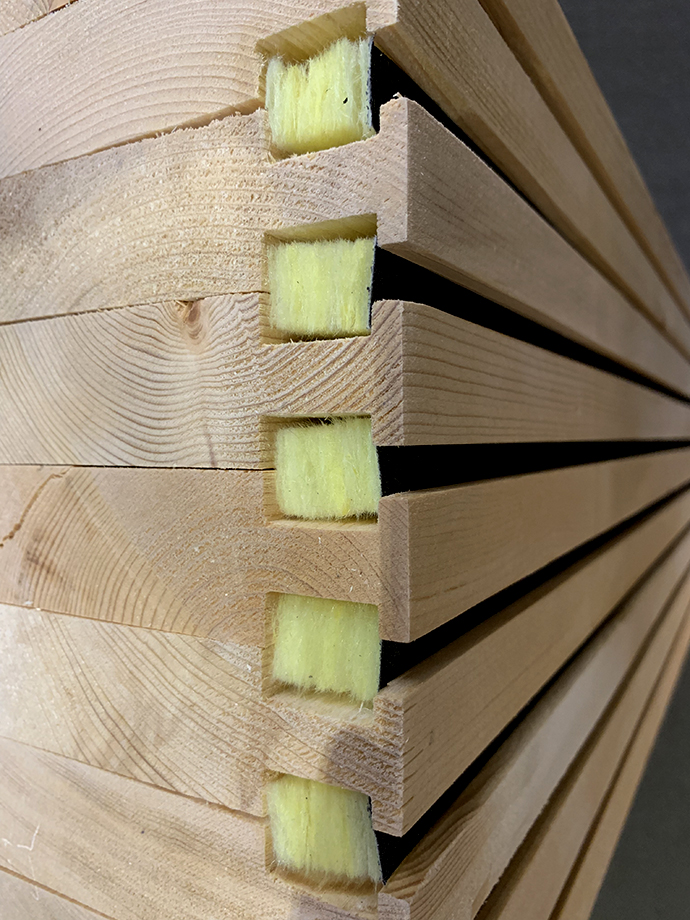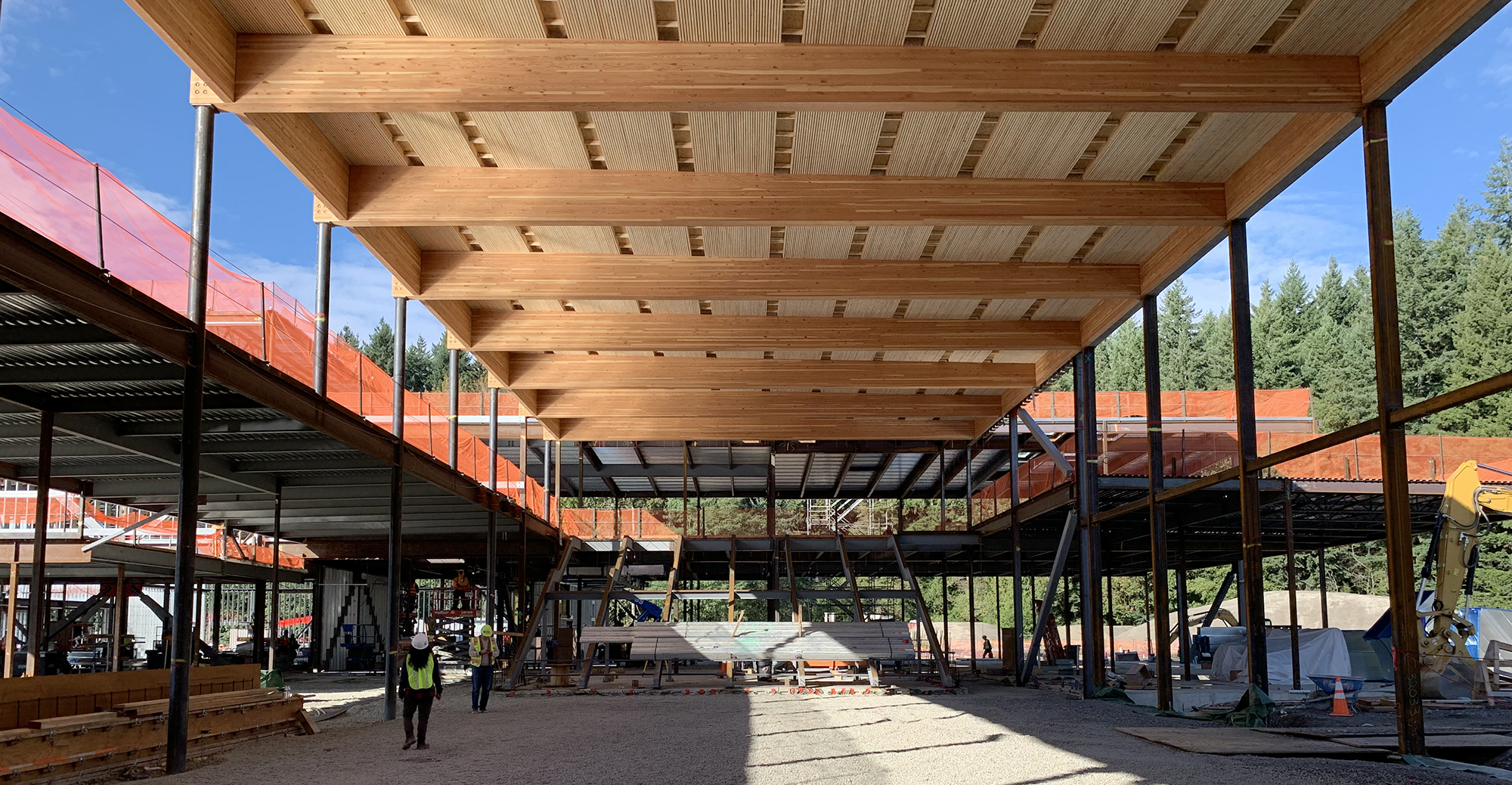by Emily Everett and Joseph Mayo
When students and staff enter the new Kellogg Middle School, they will be greeted by an abundance of natural, carbon sequestering material: dowel-laminated timber panels (DLT) and ribs of glued-laminated timber beams (GLT). Not only is the roof/ceiling of the building’s entry, dining commons, and library a warm and beautiful material, it also readily absorbs noise and is a vital component to creating excellent acoustics within the school’s largest spaces. While DLT has been gaining popularity, Kellogg represents the nation’s first acoustic DLT system installation, utilizing the wood panels for structure, finish, and acoustical control all at the same time.

DLT is an all-wood product, made up of 2x softwood lumber stacked together and laminated with hardwood dowels to create massive structural panels that can be used for floors and roofs. The use of hardwood dowels to bind the panels into a tight structural unit virtually eliminates the need for any adhesives, resulting in DLT panels which are essentially 100% wood and have zero potential to off-gas any harmful volatile organic compounds (VOCs) into the school environment. This healthy choice contributes to positive indoor air quality where the main scent is natural pine, a positive feature for ensuring the health of the student population.

Acoustic DLT is also unique because sound absorbing fiber insulation is added to the panels. This is accomplished by using CNC tools at the factory to rout out thin channels between the laminations where acoustic insulation is inserted into the cavities. This unique process can be used to achieve noise absorption as high as a 0.7 NRC value. At Kellogg, the acoustic profile was utilized to showcase the wood structure without the need of an additional acoustic ceiling, like acoustic ceiling tile, typical in standard construction.
The largest DLT panels used at Kellogg are nearly forty feet long by six and a half feet wide. The panels were prefabricated and efficiently flat-packed to the construction site where they were erected in just two weeks’ time. A small gap was left between the panels to provide an integrated space for electrical, lighting and other systems. To further quicken the pace of construction, Zip System sheathing was used on top of the DLT panels as a diaphragm to transfer shear forces through the roof system. Because the sheathing has an integrated water-resistive and air barrier pre-applied at the factory, this allowed the building to be dried-in quickly and efficiently, thereby minimizing the chance of moisture exposure to the wood structure and finish.

In addition to the acoustic, structural, and material health properties of DLT, the material also sequesters large amounts of carbon. Traditional construction materials like steel and concrete emit large quantities of climate altering greenhouse gases into the atmosphere during their production. The use of DLT instead sequesters more carbon than it emits in the manufacturing process and consequently it can be used as an effective carbon store for long periods of time. By transitioning from carbon emitting to carbon sequestering materials, buildings can play a key role in fighting global climate change.
The DLT used at Kellogg has sequestered an estimated 75,000 kg of CO2. In addition, the GLT beams supporting the DLT have sequestered an estimated 214,000 kg of CO2. The total carbon sequestered in Kellogg’s wood structure is equivalent to the CO2 emissions from 32,500 gallons of gasoline.
Mahlum’s use of this new technology was made possible because of the following partnerships:
Owner: Shoreline Public Schools
Engineer of Record: Coughlin Porter Lundeen
General Contractor: Hoffman Construction
DLT Manufacturer/Supplier: StructureCraft
Installer(s): Mustang Ridge Construction and McClean Iron Works
